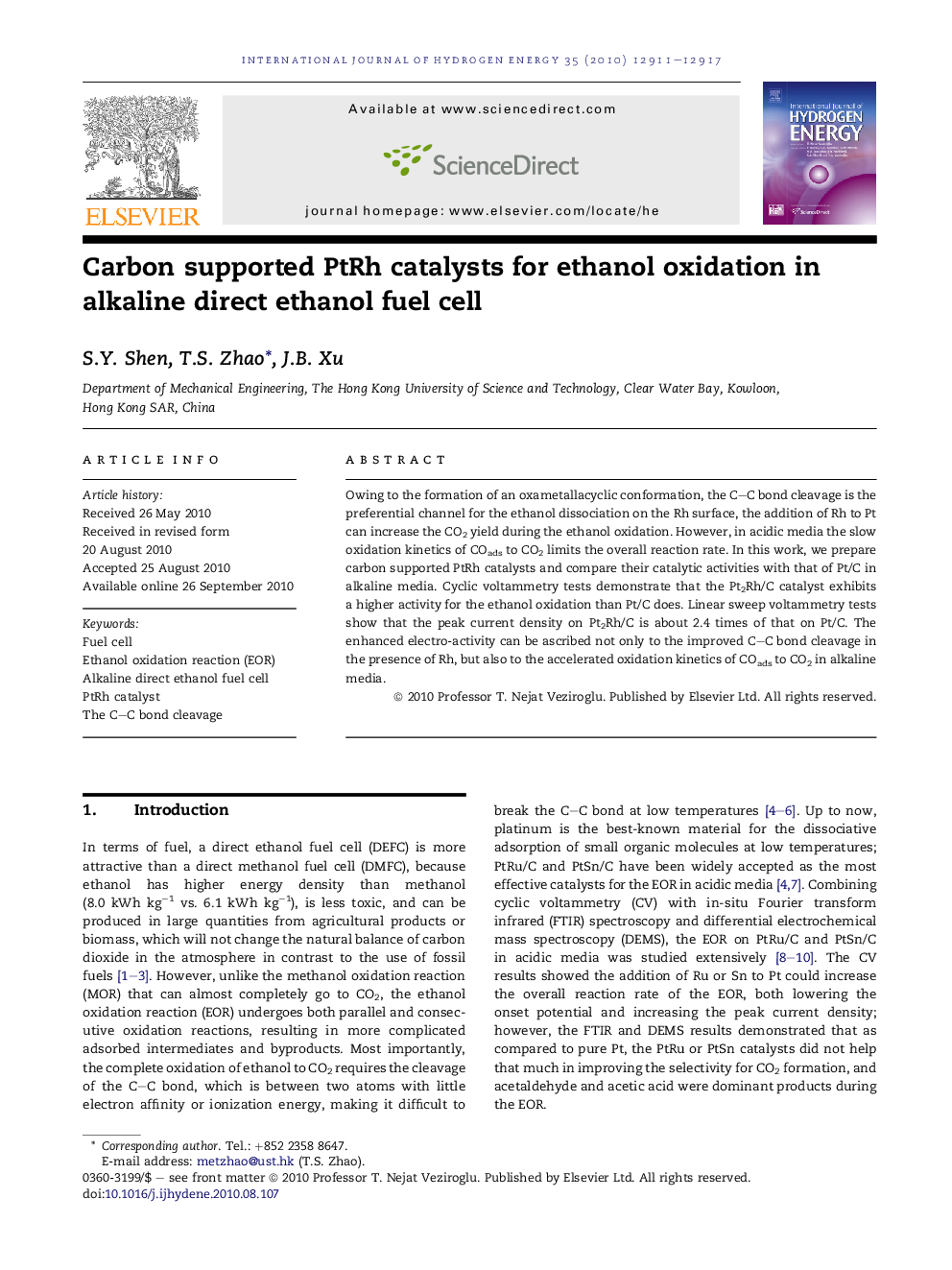| Article ID | Journal | Published Year | Pages | File Type |
|---|---|---|---|---|
| 1279934 | International Journal of Hydrogen Energy | 2010 | 7 Pages |
Owing to the formation of an oxametallacyclic conformation, the C–C bond cleavage is the preferential channel for the ethanol dissociation on the Rh surface, the addition of Rh to Pt can increase the CO2 yield during the ethanol oxidation. However, in acidic media the slow oxidation kinetics of COads to CO2 limits the overall reaction rate. In this work, we prepare carbon supported PtRh catalysts and compare their catalytic activities with that of Pt/C in alkaline media. Cyclic voltammetry tests demonstrate that the Pt2Rh/C catalyst exhibits a higher activity for the ethanol oxidation than Pt/C does. Linear sweep voltammetry tests show that the peak current density on Pt2Rh/C is about 2.4 times of that on Pt/C. The enhanced electro-activity can be ascribed not only to the improved C–C bond cleavage in the presence of Rh, but also to the accelerated oxidation kinetics of COads to CO2 in alkaline media.
